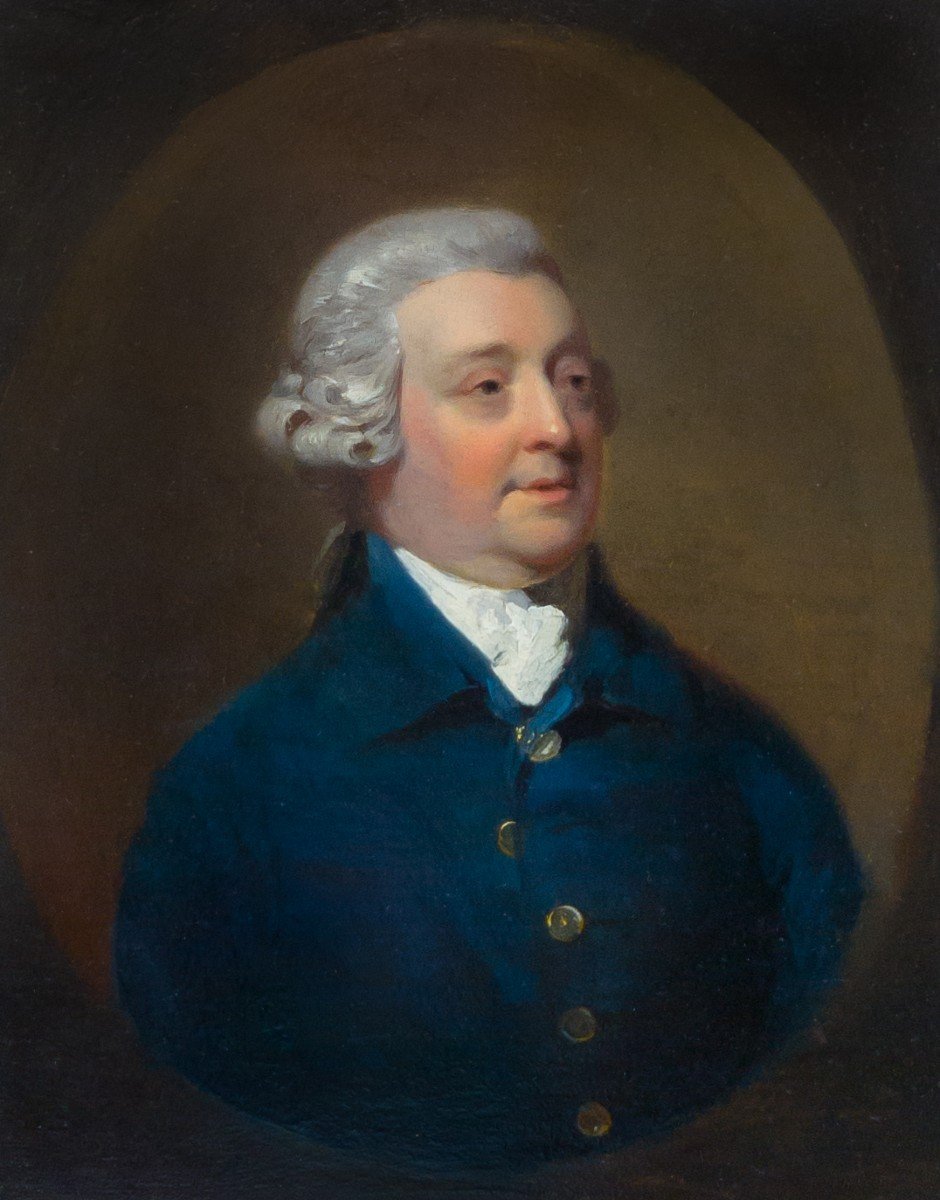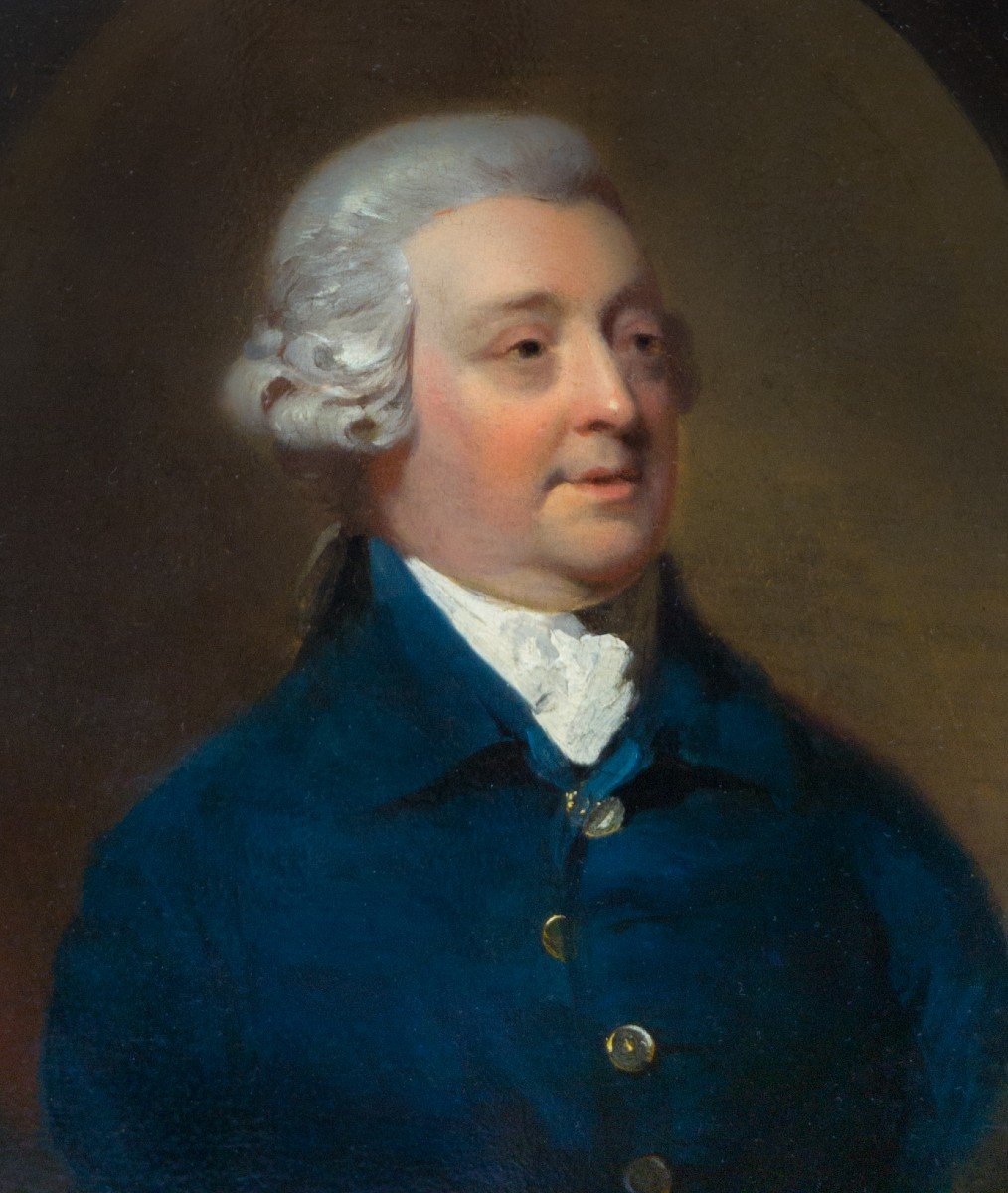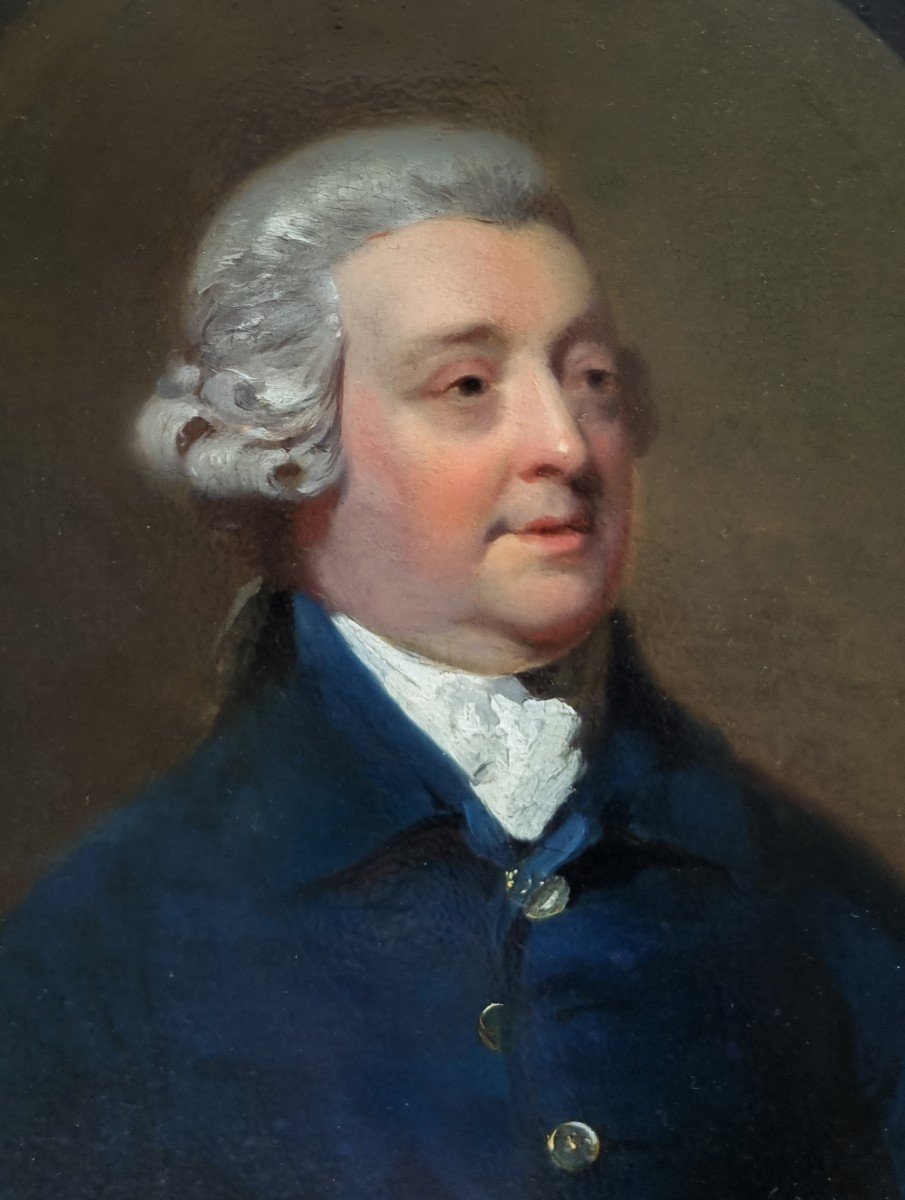"Fine English Portrait Of A Gentleman In A Blue Coat & Powdered Wig C.1775, Rare Oil On Panel "
A superb and rare example of the artist’s workThis portrait is a fine example of the late 18th century English school, where the sitter is portrayed in a standard gentlemanly manner. Depicted in a blue coat with large gold buttons, white cravat, and a fashionable powdered wig which has been tied at the nape of the neck in a queue, it is striking in its recording of the respectable, learned, and amiable character of the sitter. It has been very finely painted, similar to the work of a miniaturist, in the mid to late 1770’s when Walton was concentrating on portraiture and had at this time established a reputation as a fine painter. The format, overall style, and the finely rendered face are characteristic features of his work.
Henry Walton (1746–1813) was a most pleasing and exquisite English painter, art dealer, art connoisseur, and art expert. He was a man whose company was much sought after because of his pleasant disposition a fact to be deduced from his paintings his high spirits, and his amusing anecdotal conversation. Walton was a friend of most of the English artists of his day, and it is probable that, since he was a friend of Gainsborough and was known to cherish a great admiration for that painter's work, he was the same Walton who purchased the contents of Gainsborough's studio after his death.
Born at Dickleburgh near Diss in Norfolk, in 1746, he was brought up and lived in easy circumstances; his great-uncle being the famous admiral, Sir George Walton. He was one of three children of Samuel Walton, yeoman farmer, and his wife, Ann Newstead. The collection of books belonging to Walton at his death suggest that he could read Greek, Latin, and French, so presumably he had a very thorough education.
In 1765, aged nineteen, Walton moved to London and in 1770 he enrolled at the Maiden Lane Academy, in Covent Garden, London, to study Art, and while there became a pupil of Johan Zoffany. After quitting the studio of that painter and setting up on his own, he married a neighbour, Miss Rust, who was also a painter and miniaturist, and soon after purchased a freehold estate, the Oak Tree Farm at Burgate in Suffolk. Here he lived and worked for many years, though he also travelled much and worked regularly and at frequent intervals in London. He exhibited for a few years at the Royal Academy.
By 1771 he was living at Great Chandos Street, Covent Garden, painting portraits in oil and miniatures, often featuring close friends and family, and later that year he was elected a fellow of the Society of Artists, and exhibited two portraits.
While he was initially drawn to landscapes, during the early to mid-1770s Walton seems to have concentrated on working as a portrait painter, presumably because it was easier to get commissions for these from the Suffolk gentry.
By the 1790’s he had also obtained an unusually high reputation as connoisseur and expert. It was said that hardly a picture of any note existed in England with which he was not acquainted. He helped to form several famous contemporary collections, among that of Lord Fitzwilliam, now the nucleus of the Fitzwilliam Museum at Cambridge. The first Lord Lansdowne was reputed never to buy a picture without Walton's advice, and he was one of the six judges called on to decide the validity of certain paintings that had passed from the gallery of Lord Radstock to Lord Lansdowne.
Walton continued to paint local Norfolk and Suffolk families well into the early 1800’s. He died on his way back from a party on the 19th of May, 1813, in New Bond Street and was buried near his parents in the churchyard at Brome, Suffolk.
Walton often visited Paris in pursuit of his studies. Yet had he been a French artist his name would have been familiar to all art-lovers, instead of obtaining celebrity through the popular engravings of his paintings.
Past sales of his work are:
His work can be found in the National Portrait Gallery London, the Tate Museum London, Victoria and Albert Museum, Dulwich Picture Gallery, and the Yale Centre for British Art.
Held in a good quality and condition period gilded frame.
Measurements: Height 33cm, Width 28cm framed (Height 13”, Width 11” framed)



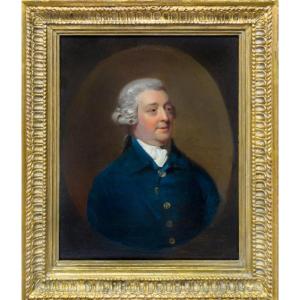

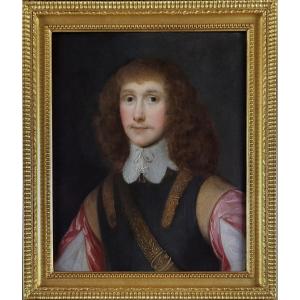
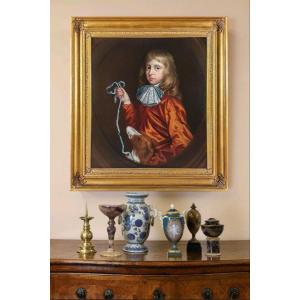
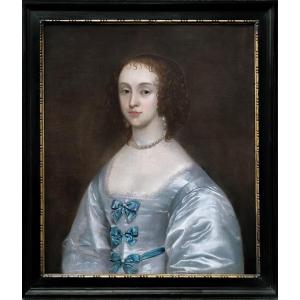
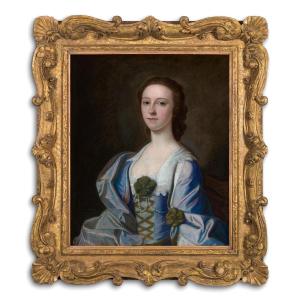

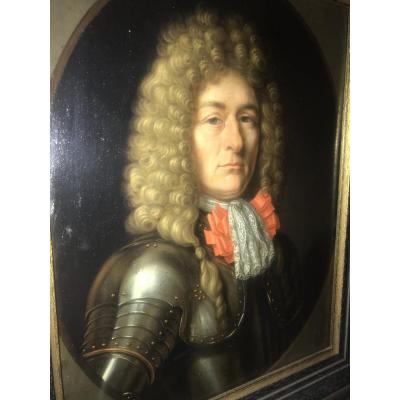









 Le Magazine
Le Magazine Rivista Artiquariato
Rivista Artiquariato TRÉSORS magazine
TRÉSORS magazine

